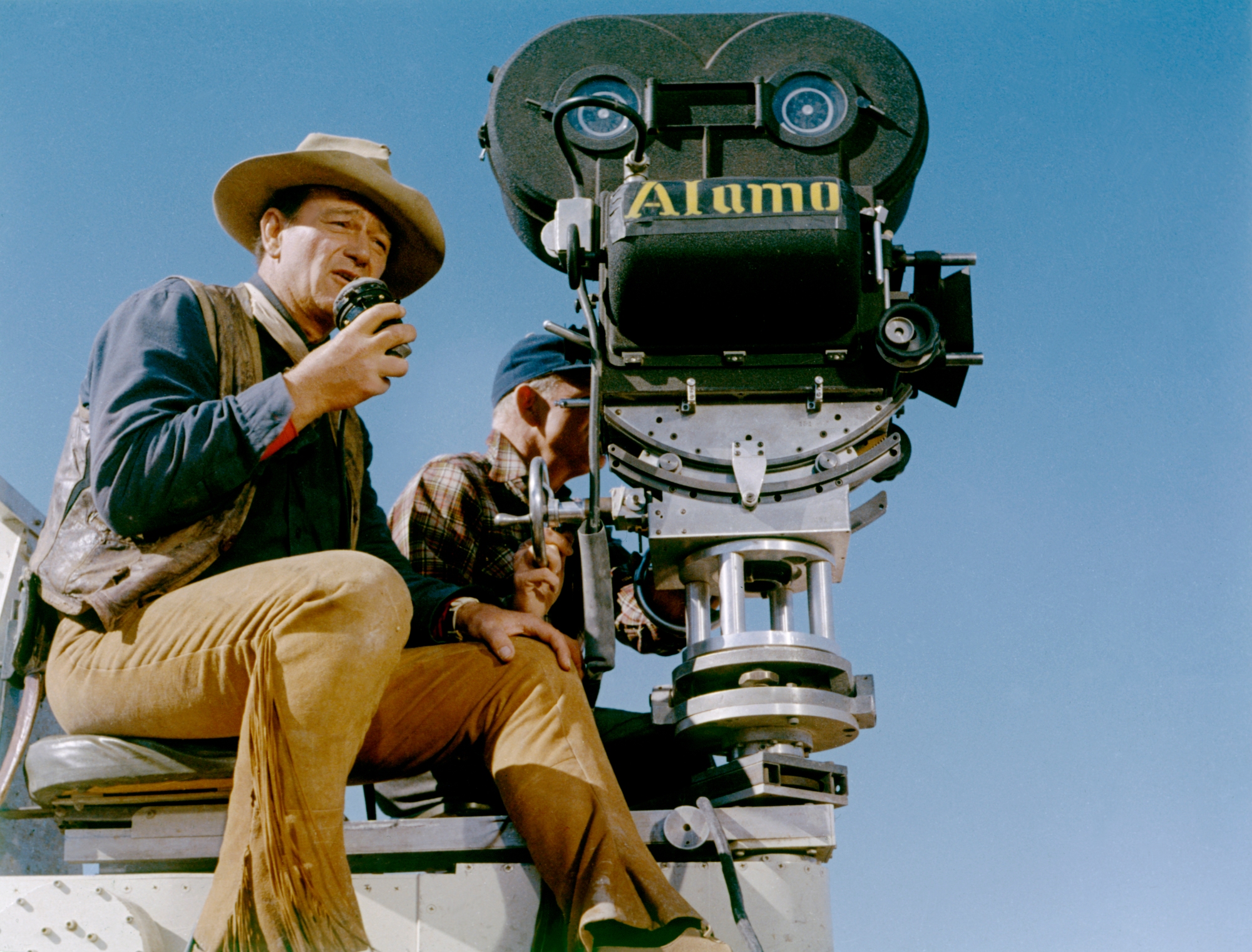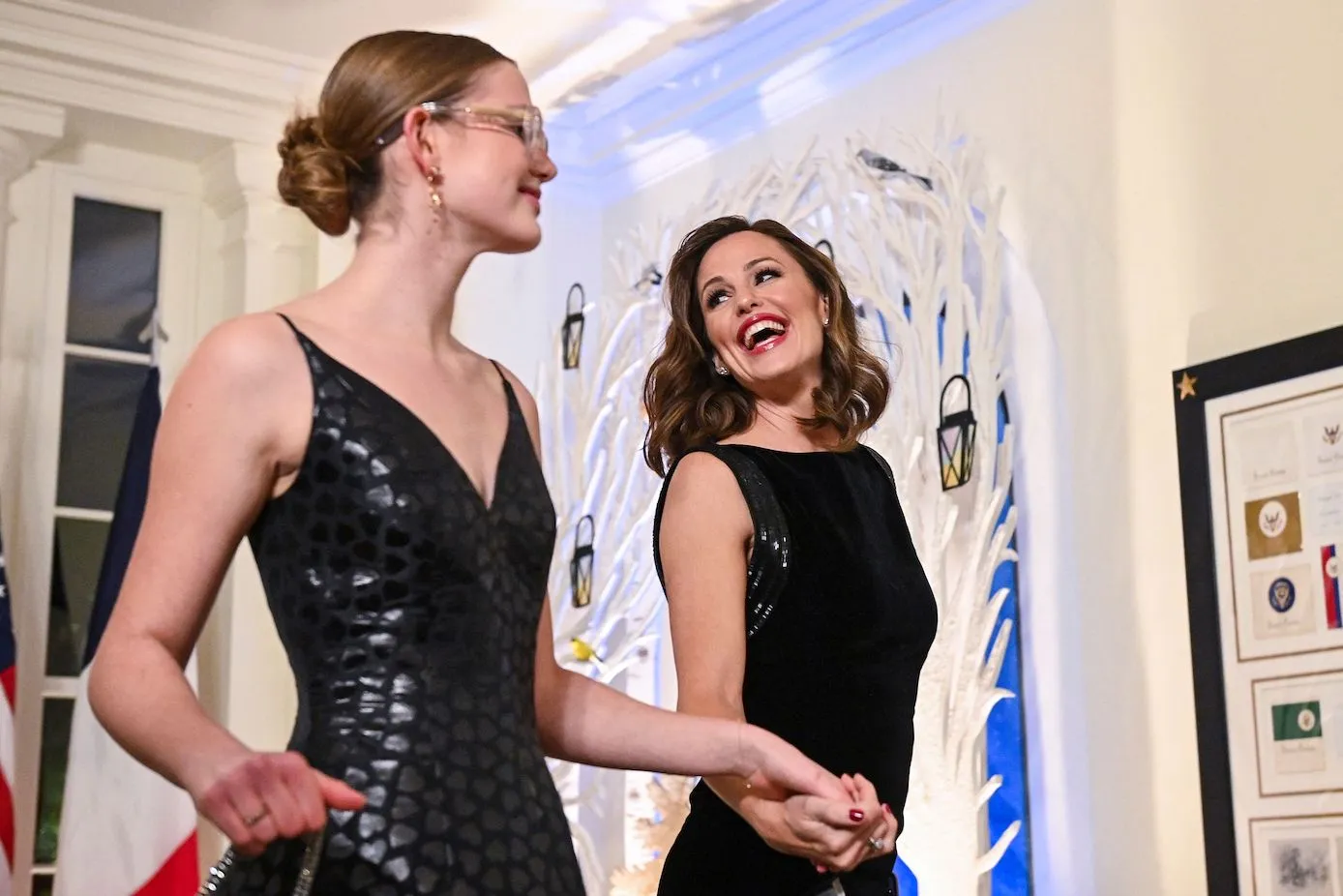John Wayne’s Mentor Showed Up on ‘The Alamo’ Uninvited to Micromanage the Duke’s Directing Style
John Wayne is a legendary Western actor who stepped behind the camera a few times, including for The Alamo. He learned plenty from John Ford, who was his mentor and longtime friend. However, Ford came to the set of The Alamo uninvited to micromanage Wayne regarding his directing style which made things difficult.
John Wayne stepped behind the camera for ‘The Alamo’

Michael Munn’s John Wayne: The Man Behind the Myth dives into the professional and personal lives of the iconic actor. Wayne sat in the director’s chair for The Alamo, which he was very passionate about bringing to the silver screen. Cinematographer William H Clothier opened up about the Duke’s process.
“Every morning Duke and I would get up early and have breakfast, and then we’d go out on the set or to a location, and we’d discuss and plan every shot we were going to use that day,” Clothier said. “Duke knew the entire script, and we were able to plan each shot, so when we began work with the cast and crew, we knew exactly what we were going to do.”
Clothier continued: “Duke would even tell me what kind of natural light he wanted, so we were able to plan which shots to start with to get the morning light, and which shots we’d do in the afternoon so the light would be right. He learned that from Ford. And he knew in his head what he wanted.”
However, Wayne had some specific habits that he had to try and shake while filming The Alamo.
“I’d say the biggest problem he had was that during a take, he’d mouth the other actors’ lines, like he was willing them to get it right first take,” Clothier recalled. “And I’d make a motion to him, and he’d suddenly realize what he’d been doing, and he’d get mad at himself.”
John Ford showed up uninvited to micromanage John Wayne directing ‘The Alamo’
John Wayne: The Man Behind the Myth revealed that Ford showed up to the set of The Alamo uninvited to micromanage Wayne. However, the actor remained very calm about the situation and ultimately figured out how to deal with the situation.
“A week or two after we started, John Ford arrives on the set,” Clothier said. “He wasn’t invited, he didn’t ask if he could come down. He just turned up. Now, that would have been okay if he hadn’t brought his director’s chair with him and set it up next to me. He’d sit there watching Duke direct, and this intimidated Duke which didn’t help his concentration.”
Clothier continued: “Ford would loudly say, ‘Jesus Christ, Duke, that’s not the way to do it.’ Duke was very patient with Ford who began telling him how to make the film. Duke just didn’t want to hurt the old man’s feelings, but he said to me, ‘He’s gonna take over the whole goddamn picture. What the hell am I gonna do?’”
However, Clothier had the perfect solution for Wayne to keep Ford busy on the set of The Alamo: “‘Give the old man a second unit.’ Duke said, ‘Bill, why didn’t I think of that?’ I said, ‘Because you’ve got enough to think about.’”
The actor-turned-director gave instructions to his son to handle John Ford
Clothier said in John Wayne: The Man Behind the Myth that Wayne’s son, Michael, had a specific job on The Alamo.
“Michael Wayne told me, “When JW decided Ford could direct a second unit, he gave me the job of watching over him,'” Clothier remembered. “‘That was a pretty rough situation to be put in, trying to keep John Ford in line. My father said to me, ‘Whatever you do, don’t let him near any of the principal actors.’ I said, ‘Why me?’ He said, ‘You’re not afraid of him.’”
However, Michael had some “rough moments” with Ford because he kept asking to bring over Richard Widmark or Laurence Harvey. Wayne’s son had to come up with excuses for why they weren’t available for filming.
“Ford shot a lot of stuff, most of it expensive wastage, just because Duke didn’t want to upset him,” Clothier said. “There are one or two moments in the film that Ford directed. Like the two guys who are always saying, ‘Do it mean what I think it do?’ ‘It do.’ Ford shot their death scene during the final battle, and that’s in the film. But so much of what he shot wasn’t used that he was furious at Duke. For a long time after, he was rough on Duke.”


